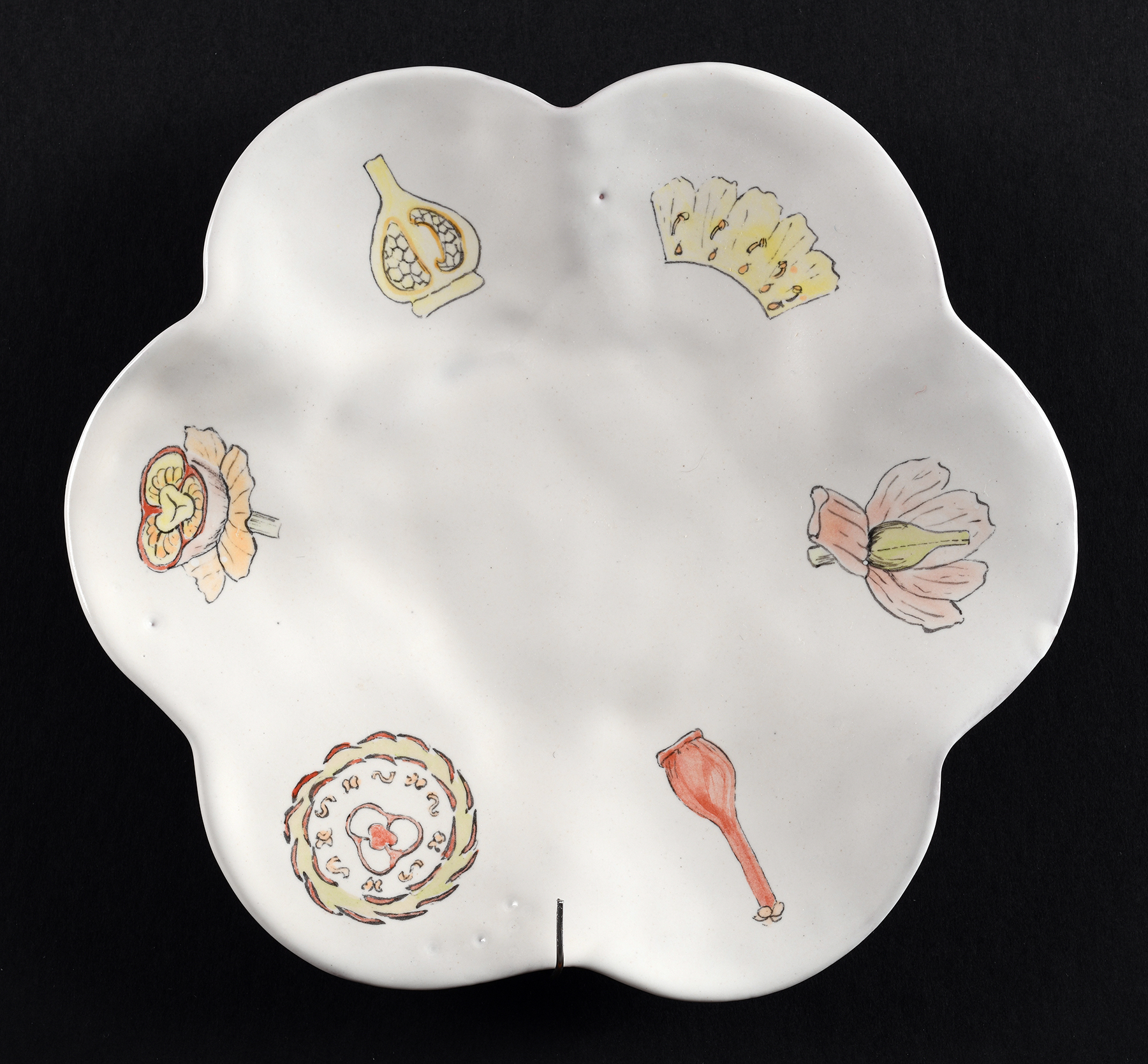ART, SCIENCE, AND DESSERT

Ostrom initially went to university to study chemistry before eventually switching to ceramics. He continued to draw on his science background in the chemistry of glazing and in plant hybridization. Ostrom is a passionate gardener with a respected expertise in rhododendrons. He was able to adapt alpine Himalayan rhododendrons to the coastal Nova Scotia climate. The dessert plates have titles like Dessert Plate with Lepidote Rhododendron Schematic Drawing or Dessert Plate with Rhododendron Stamens and Pistils. The Venn diagram of overlapping interests represented in these dessert plates could only have come from Ostrom.
The shape of the plate is based on a Song Dynasty (960–1279) flower design. Ostrom has long been fascinated with China and its ceramics. He studied and taught the history of Asian ceramics before first visiting China in 1976. For the next quarter-century he was profoundly affected by Chinese ceramics past and present. In 1996 he lived and taught there for a year.
These plates remind us that ceramics and dinnerware have often been decorated with flowers and foliage. Ostrom is doing that very thing but focussing on the reproductive organs and vascular systems rather than daisies or roses. These are not detailed textbook style representations but cartoonish sketches. They have the quality of a junior high science test answers or a whimsical New Yorker cover which further underlines the playful humour of these works. The press-moulded clay they are with is loose like the drawings. Everything about these plates feels handmade and homey. They are smart but casual about it.
The plates are displayed in a grid on the wall which is a familiar display mode for minimalist and conceptual artworks. Ostrom was a central figure at the Nova Scotia College of Art and Design during the Conceptual Art era in the sixties and seventies onward. The conceptual element is evident in the grid display and the subversion of floral ornament, but these plates are not theoretical. They are meant to be used. Walter Ostrom and his wife/collaborator, Elaine are known for their hospitality. The plates and other wares they chose for a social gathering are meant to complement and elevate the occasion.

